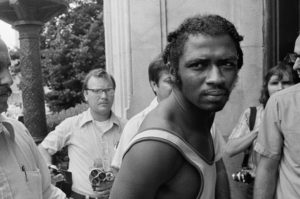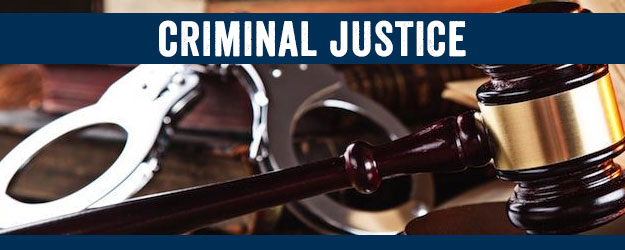“Soft on Crime.” That was heard loudly from many in law enforcement describing the Obama Justice Department, especially as it pertains to severe and lengthy sentences. It did not seem to matter the seriousness of crimes nor the horrendous results of the actions of those who committed crimes. The bottom line was, “American jails are too full of primarily minorities. We must reverse that trend.”
“Reverse that trend” took hold, especially in Obama’s second term. Liberal judges and criminal justice bureaucrats began to find ways to arbitrarily determine which criminals “deserved” to be released from their sentences that often had been determined by juries. That policy has carried over into the first year of the Trump presidency.
Trump campaigned on tough criminal justice in the U.S. And his first-year policies support that, although no laws have been passed to reverse the trend to go soft on criminals that began under Obama. That will take time. The Trump DOJ has rolled out very tough stances on gangs and gang violence, pedophilia and drug trafficking, and serious drug offenses like drug trafficking.
The absurdity of the “new” criminal justice policy of early release of serious felons was illustrated no better than in the following story:
Shawangunk, NY – A violent member of the Black Revolutionary Army (BRA), who brutally murdered three police officers in two separate incidents, has been granted parole. The BRA, a radical, violent offshoot of the Black Panthers, attacked and murdered police officers indiscriminately in the late 1960’s and early 1970’s, according to the Officer Down Memorial Page.
They were responsible for the murders of at least 10 officers, and launched nationwide attacks that injured many more. Herman Bell, 70, was one of three murderers who used a bogus 911 call to lure New York Police Department (NYPD) Officers Waverly Jones and Joseph Piagentini into an ambush in 1971, the New York Post reported. Officer Jones was shot in the head, and died instantly, according to the New York Daily News. Bell and his fellow BRA cohorts, Anthony Bottom and Albert Washington, ruthlessly tortured Officer Piagentini as he told his assailants that he had a wife and two children, and begged for his life. The trio shot Officer Piagentini 22 times. Bell used the officer’s duty weapon to fire the fatal round, FOX News reported.

According to the San Francisco Gate, the men then traveled to California, where Bell, Herman, and five other BRA members carried out an attack on the Ingleside District Police (IDP) station. The men entered the station, shoved a shotgun barrel through an opening that separated the waiting area from the rest of the office, and fired between five and 10 rounds, according to the Officer Down Memorial Page. IDP Sergeant John Young was murdered in the attack, and a civilian employee was injured. Bell and Herman fled the scene.
Bottom later told investigators that he had planned the attack, but that he was not able to participate, because he had been arrested the day prior as he attempted to murder San Francisco Police Sergeant George Kowalski, the San Francisco Gate reported. Sgt. Kowalski’s life was spared only because Bottom’s weapon jammed. Bell was apprehended in 1973 in relation to the officers’ murders.
In 1975, charges leveraged against him in Sgt. Young’s murder were dropped, after evidence indicated that Bell’s confession may have been the result of torture, according to the Officer Down Memorial Page. Bell was convicted for the murders of Officer Jones and Officer Piagentini in 1979, and was sentenced to life in prison. In 2009, after new forensic evidence surfaced in Sgt. Young’s murder, Bell was convicted of manslaughter and conspiracy to commit voluntary manslaughter.
For decades, Bell insisted that he was a political prisoner, and that he had been framed for the officers’ murders, the New York Post reported. His requests for parole had been denied by the board on seven occasions since 2004, on the grounds that his release would “deprecate the severity of this crime,” according to the New York Post.
Bell’s eighth attempt was successful, however.
Officer Piagentini’s widow, Diane, learned of the board’s decision after the fact.
“We are angered and sickened that this horrible person, who was devoid of any human compassion or empathy when he continued to shoot my already wounded husband, Joseph, while he pleaded for his life for the sake of his family, will now be free to walk out of prison,” she told the New York Daily News.
New York Senate Majority Leader John Flanagan demanded that Governor Andrew Cuomo remove the members of the parole board who authorized Bell’s release. “Herman Bell is a callous and depraved cop-killer who took the lives of two police officers just because they wore the uniform,” Flanagan told the New York Post. “He has forfeited his ability to live outside of the four walls of a prison cell.
Patrolmen’s Benevolent Association president Pat Lynch expressed similar outrage in a statement to the New York Post. “There are no words to express our anger and disgust that they have granted release to a cold-blooded cop killer who successfully gamed the system in two states to win his freedom,” Lynch declared. “Herman Bell, who committed the most barbarous and heinous crimes in killing three police officers and who showed absolutely no compassion to Joe Piagentini, who pleaded for his life saying he had two small daughters, should have never been granted parole,” he continued. “We are disgusted, offended and extremely angry with this parole board’s decision,” Lynch added.
Former Parole Board Chairman Bob Dennison, who led the panel from 2004 until 2007, said that the board made a “bad decision.” “I’m shocked,” said Dennison, who currently advocates for inmates. “A cop killer like this should never be released. This was a cold-blooded killing of a uniformed officer.”
Bell’s lawyer, Robert Boyle, argued that the cop-killer had earned his freedom. “He has satisfied all the criteria for parole, he has expressed remorse, he has an unblemished prison record and he’s been extremely involved in helping others inside,” Boyle told the New York Daily News. “It is only correct that the Parole Board apply the law in this controversial case and granted him parole and we are gratified they did so.”
Bell said he would not make a statement about his parole “out of respect for the victims and their families,” Boyle added.
The cop killer is expected to walk out of prison in April.
Summary
In my state of Louisiana, Governor Jon Bell Edwards (D) released 1400 prisoners November 1, 2017 under what is termed “The Louisiana Justice Reinvestment Act.” Those 1400 supposedly were non-violent offenders and non-sex offenders. That sounds rather benign until one understands the history of arrest charges and the process for applying those when it comes to trials, plea bargaining, and actual sentences.
It is customary in felony arrests for there to be multiple charges. As an example: when someone robs a convenience store with a gun, that person is charged with armed robbery, illegal possession of a firearm, holding someone against their will, theft, and if there is any violence, assault or assault and battery. In such cases when it is time for resolution and sentencing, plea deals result in dismissal of most of the charges. The perpetrator then pleads guilty to say illegal possession of a firearm and theft. That does not mean they were not guilty of all of the charges but will serve a sentence based solely on the charges pled to.
How many of those 1400 Governor Edwards sent packing were arrested for possession of Schedule 1 narcotics, intent to distribute, possession of a firearm illegally, use of a firearm during the committing of a felony, etc., who then plead to possession of Schedule 2 or 3 narcotics with the other charges dropped? There’s quite a difference between a guy smoking a joint at a party and another guy possessing a pound of uncut heroine that he intends to sell to a fleet of drug pushers who will then cut the narcotic and sell to hundreds of junkies. Under the Governor’s plan, that guy was released!
Yes, it is true that the U.S. Criminal Justice system needs reform. But it does NOT need reform at the expense of those that felons kill, injure, or harm in any way. Fines and sentences need to be overhauled so as to be fair to all concerned.
The purpose for criminal prosecutions is two-fold: first, to punish an offender so as to encourage by that punishment the offender to turn from the circumstances that allowed the wrong in the first place; secondly to discourage all others from committing the same or similar acts against others to prevent similar punishment.
Let’s rework the system so the punishment fits the crime. But let’s punish ALL crimes per the law and not rely on arbitrary enforcement. That’s fair to everyone.

